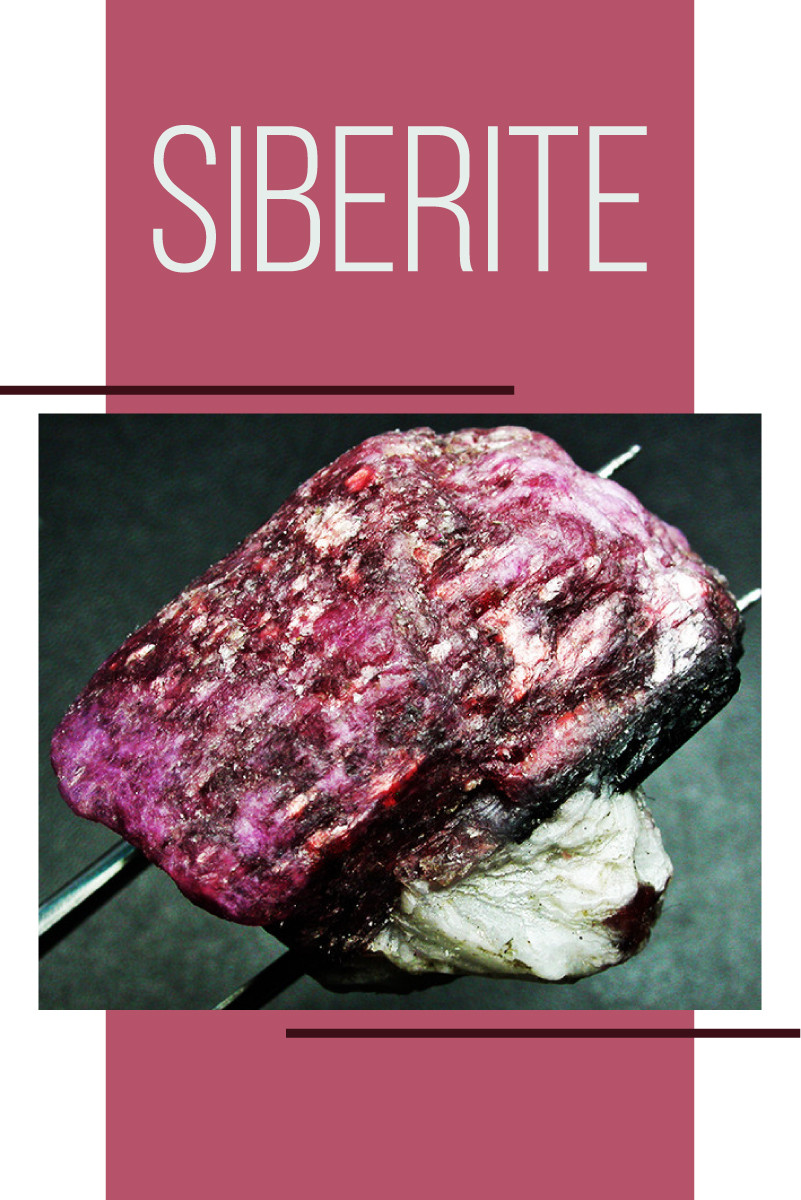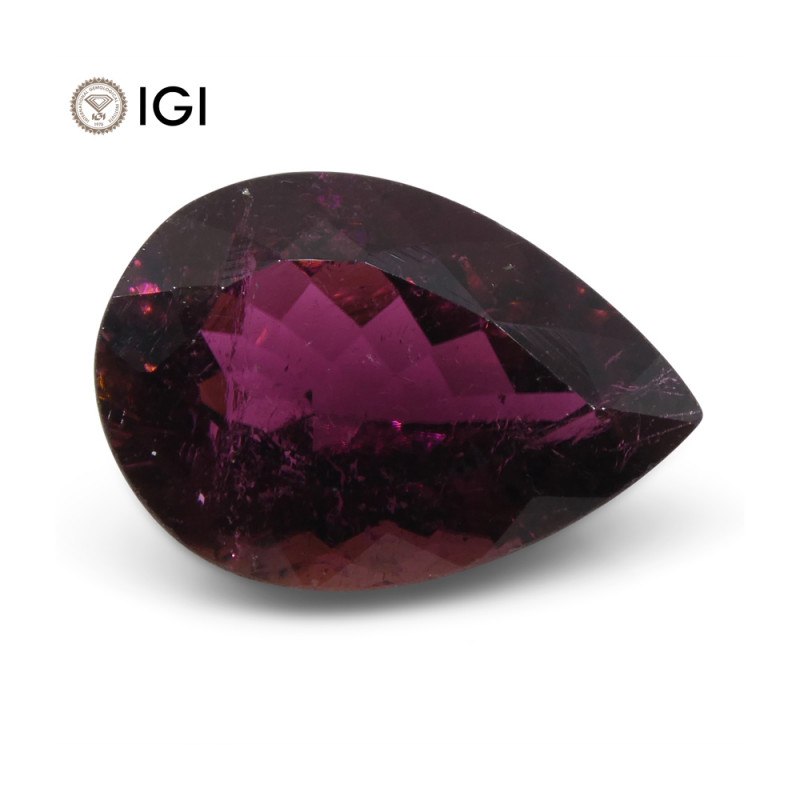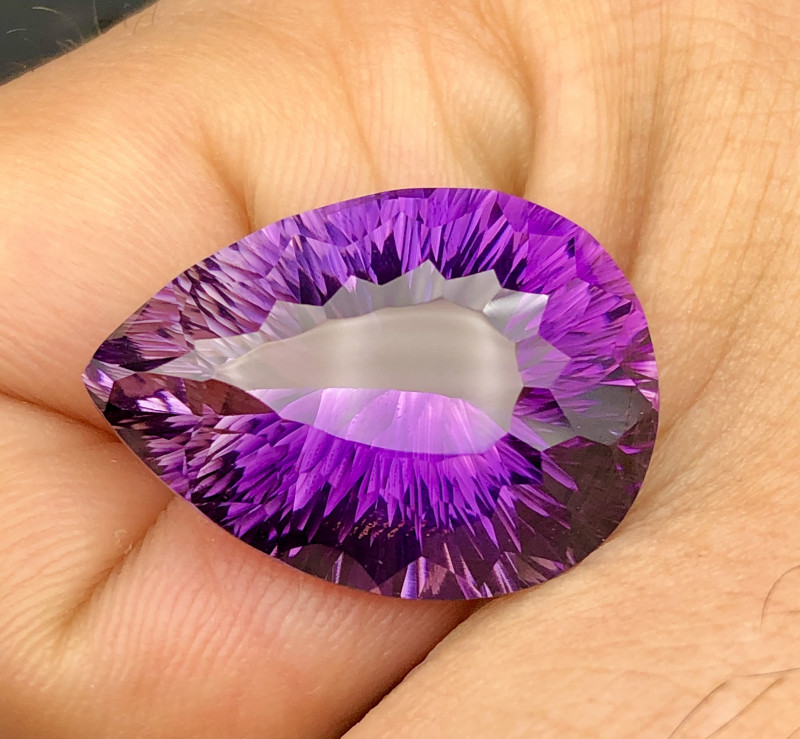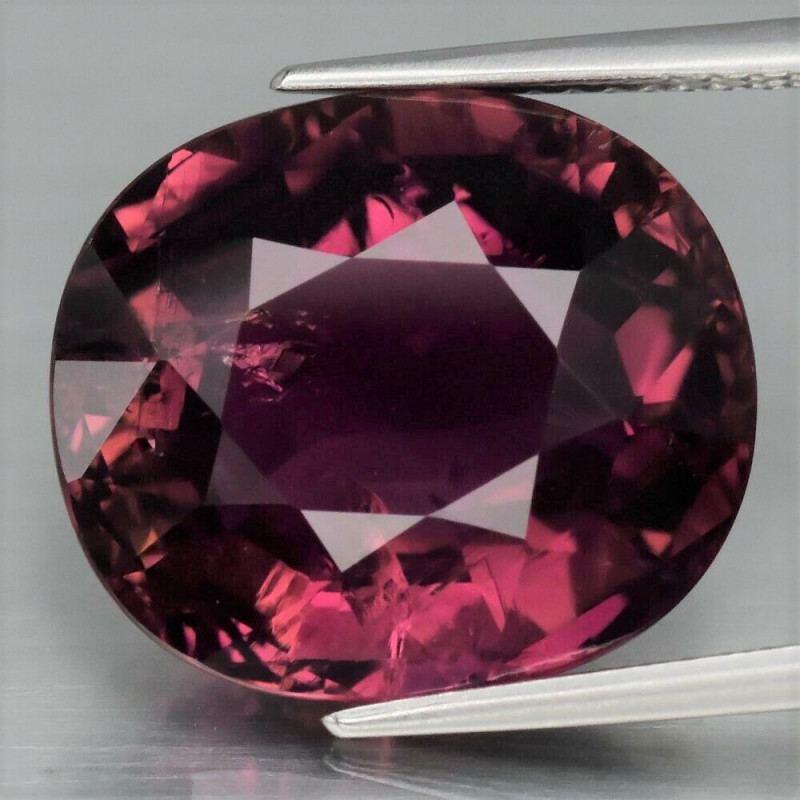Siberite Gemstone: Properties, Meanings, Value & More
 Siberite is a violet, blue, or red tourmaline gemstone variety. Most people are more familiar with varieties like Paraíba tourmaline or watermelon tourmaline, while siberite tourmaline is not as well-known.
Siberite is a violet, blue, or red tourmaline gemstone variety. Most people are more familiar with varieties like Paraíba tourmaline or watermelon tourmaline, while siberite tourmaline is not as well-known.
Wait, what is tourmaline in the first place? Tourmaline is a broad family of gems often credited with being the world’s most colorful mineral group (though some may argue this honor goes to fluorite).
Black is the most common tourmaline color, but what is the rarest color of tourmaline? The rarest tourmaline variety is Paraíba tourmaline, but color-changing specimens along with pure yellow, orange, blue, red, or purple tourmalines are also rare.
Now, what is purple tourmaline? That’s what we’ll be answering today as we go over the purple tourmaline siberite, discussing its properties, powers, prices, and more.

What Is Siberite?
Siberite tourmaline is a semi-precious gemstone often called “purple tourmaline,” though its color commonly leans toward reddish-violet or violet-red.
As a tourmaline variety, siberite is an October birthstone, Venus star stone, and traditional 8th wedding anniversary gem. Although tourmaline is a zodiac stone for Libras, purple gemstones like siberite also reflect the power color of Sagittarius.
Natives of Maine, USA, can also honor their heritage with tourmaline, as it’s been the official state mineral since 1977.
 Pictured above: Amethyst
Pictured above: Amethyst
Purple Tourmaline vs. Amethyst
At first glance, you may confuse siberite for amethyst. But the stones are entirely distinct. Here are the differences between the two:
Species: Siberite is a tourmaline variety, and amethyst is a quartz variety.
Composition: Siberite is a sodium, lithium, aluminum, borosilicate mineral with the formula Na(Li1.5Al1.5)Al6Si6O18(BO3)3(OH). Amethyst is a silicon dioxide (silica) mineral with the formula SiO2.
Hardness: Siberite is slightly higher on the Mohs mineral hardness scale at 7 to 7.5, while amethyst ranks at 7.
Transparency: While siberite can be transparent, it’s usually opaque. Amethyst is translucent to transparent.
Color-wise, amethyst is always some shade of purple, but siberite can also be blue, pink, or red. Additionally, amethyst’s purple coloring comes from natural irradiation, iron/aluminum impurities, or both; siberite’s purple coloring comes from manganese and iron impurities.
Siberite Specifications & Characteristics
The tourmaline mineral group is complex, with various sub-groups and more than 30 varieties. That said, there are three important tourmaline species to know: schorl, dravite, and elbaite.
Some gemologists also consider the liddicoatite tourmaline species important. Liddicoatite was formerly considered a type of elbaite until 1977 — the only difference between them is that liddicoatite has calcium substituting for sodium. It’s a rare species known for being commonly color-zoned.
Schorl (black tourmaline) is the most common tourmaline species, making up 95 percent of all natural tourmaline. However, elbaite tourmalines are the most common gem-quality varieties.
Siberite is an elbaite tourmaline variety. Other elbaite tourmalines include:
Some gemologists consider siberite a subtype of rubellite, which is a pinkish-red, red, or purplish-red variety.
Elbaite tourmalines like siberite usually form as or prismatic crystals with 3, 6, 9, or 12 sides. They can also form as acicular (needle-like) or rounded crystals with a triangular cross-section. Other habits include column-like, botryoidal (resembling a grape cluster), or radiating aggregates, along with compact masses.
Some rare siberite crystals may have rhombohedral terminations.
Below is a list of siberite’s mineral properties:
Mohs hardness: 7-7.5
Color: Blue, violet, purple, reddish-violet, pink, red
Crystal structure: Hexagonal (trigonal)
Luster: Vitreous (glassy) or resinous
Transparency: Transparent to opaque, typically opaque
Refractive index: 1.614-1.666
Density: 3.02-3.26
Cleavage: None
Fracture: Uneven/irregular or small conchoidal
Streak: White
Luminescence: None
Pleochroism: Present & strong, usually light purple to darker purple
Birefringence: 0.014-0.024
Dispersion: 0.017 (moderate)
With the mineralogy covered, let’s shift into the metaphysical side as we examine siberite tourmaline’s meaning.

Siberite Meaning & History
First looking at the general tourmaline stone meaning first, these gems symbolize understanding, compassion, and open-mindedness. They also represent wisdom and perspective.
What do the different colors of tourmaline mean?
Colorless: Purity & rebirth
Black: Grounding & protection
Brown: Strength & resilience
Red: Energy & passion
Pink: Love & empathy
Orange: Creativity & charisma
Yellow: Joy & intelligence
Green: Luck & hope
Blue: Serenity & trust
The purple tourmaline crystal meaning is one of divine wisdom, spirituality, and self-control.
In Feng Shui, the ancient art of balancing energy flow through the thoughtful arrangement of your surroundings, tourmaline is beneficial for balancing yin and yang energies. Practitioners also use tourmaline for creating an energy shield to block out negativity.
History
The first record of tourmaline’s discovery was when Spanish conquistador Francisco Spinoza found green tourmalines in Brazil in 1554, initially mistaking them for emerald. However, Dutch merchants likely started trading black tourmalines around the 1400s, using their magnetic properties to get ash out of their pipes.
The first discovery of siberite is unclear, but the original specimens analyzed came from Siberia, specifically Mount Soktuj. There are illustrations of Siberian siberite specimens by Jean-Gabriel Caquet dated around 1800.
The name “siberite” derives from the French sibérite, meaning “stone from Siberia.” Some define siberite as rubellite from Siberia.

Siberite Healing Properties
Like all tourmalines and all gemstones overall, siberite can be used as a healing stone. Purple siberite joins other purple gemstones in bringing greater spiritual wisdom and intuition. Redder siberite specimens, like other red gemstones, offer motivation and energy.
Physical Healing
Crystal healers recommend siberite for treating or helping with:
Insomnia
Hand-eye coordination
Concentration
Immune system function
Digestion problems
Vitality
Migraines
The crystal is also said to balance the left and right brain hemispheres and strengthen bones.
Emotional Healing
Emotionally, siberite is believed to bring its wearer serenity, grounding, and relaxation. Crystal healers recommend the stone for helping you let go of emotional attachments that aren’t beneficial to your well-being.
Additionally, siberite is said to help you recover from heartbreak, trauma, or grief. It may also help calm irritability and improve meditation.
Chakra Healing
Chakra healing involves resolving blockages of energy flow among your chakras (energy centers) to bring the entire system back into harmony. Siberite is a chakra stone for the third eye chakra, located in the center of your forehead.
The third eye chakra governs spiritual awareness, intuition, and understanding of the world. If you feel stuck in your thoughts or disconnected, your third eye may be blocked. Opening it with siberite will help you access greater spiritual wisdom.

Siberite Gemstone Properties
Siberite’s value as a gemstone is determined by its color, cut, and clarity.
Color
Despite being widely known as “purple tourmaline,” siberite can also be pink, blue, red, or a mixture of red and violet. Pink to red colors come from manganese impurities, blue shades come from iron impurities, and purple shades come from a mixture of both.
Siberite gems with blue hues may carry higher value. Strong dichroism — showing two different colors depending on the viewing angle — is also valuable.
Cut
Because tourmaline lacks cleavage and has pretty good hardness, virtually any faceted cut is possible for siberite. Strongly dichroic gems like siberite should be cut with the table parallel to the axis to display this effect best.
Faceted siberites will carry the highest value. Lower-quality siberite specimens will usually be cut as cabochons or sold uncut as rough specimens.
Clarity
Clarity describes the amount of visible inclusions in a gem. Purple elbaite tourmalines like siberite have a Type II colored gemstone clarity grade, meaning minor visible inclusions are expected.
Some potential tourmaline inclusions are:
Long, thin, gas-filled fractures that reflect light
Hollow tubes
Needles
Color zoning
Some siberites also have “floater” crystal inclusions inside. Generally, visible inclusions will lower the gemstone’s value.
Inclusions get inside a gem during its formation. Speaking of which, how does siberite form?

Siberite Formation & Sources
Tourmaline crystals like siberite grow underground in igneous rocks called pegmatites. As magma heats groundwater, other minerals dissolve into the water and the solution fills crevices underground. Gradually, this solution cools and crystallizes into tourmaline.
When manganese impurities are present, pink tourmalines can form. Iron impurities can produce green or blue tourmalines. Manganese and iron impurities produce purple tourmaline.
Unlike most gems, tourmaline can grow into 3-sided prisms. Plus, some tourmalines are hemimorphic, meaning the crystal’s top and bottom are shaped differently.
Mining Locations
Where does purple tourmaline come from? The best sources for siberite are Namibia and Russia, specifically Siberia. Other sources include Nigeria and Brazil.

Siberite Price & Value
Siberite prices aren’t as affordable as black tourmaline, but they’re not as pricey as Paraiba tourmaline.
Faceted siberite gemstones go for around $30 to $460 per carat at wholesale or $75 to roughly $1,170 each.
Siberite cabochons typically fetch $3.50 to $50 per carat.
Rough siberite specimens are almost always under $1 per carat, or around $20 to $50 each.
Siberite Care and Maintenance
Luckily, gemstone care for siberite is pretty straightforward. The stone doesn’t have cleavage planes that break easily and it has decent hardness. You may want protective settings for siberite rings, though.
You can clean siberite with a soft toothbrush, lukewarm water, and mild soap. These crystals can sometimes be heat-sensitive, so keep them away from extreme heat and don’t store them in direct sunlight.

Ready to Soar with Siberite?
Siberite may not be the most well-known tourmaline variety, but it’s no less beautiful than any other tourmaline. Its calming and awareness-improving properties make it a perfect companion for anyone seeking these benefits — or for anyone who loves gorgeous purple gems!
Was this article helpful?
Ross Sedawie
- Written - 1st Jan 2023
- Edited - 1st Aug 2023
















